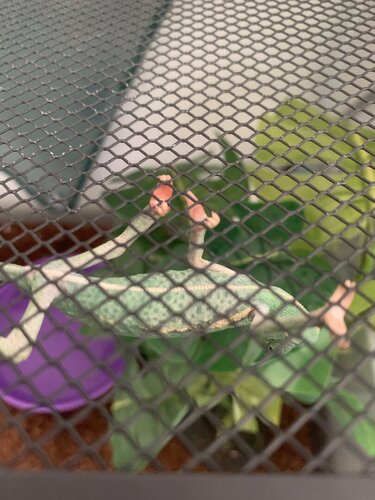Nathann18
New Member
Hi , so recently I’ve noticed my chameleons hands to be red from under . She is also always turning dark with stripes and dots as well. I feed her 3-4 meal worms covered in d-3 daily ( some meal worms are covered others not) and her enclosure temp ranges from 70-80 and the humidity 65-80 normally .





